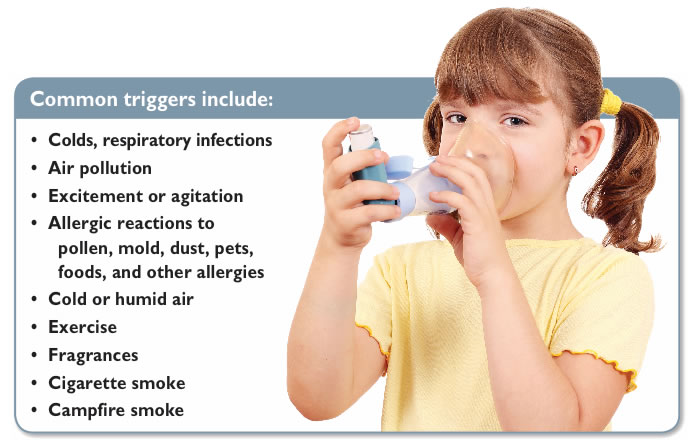|
Asthma in ChildrenJennifer Bassett, MD Over 7 million children in the United States have asthma. Asthma is the third leading cause of hospitalization among children in the United States. Between 10 and 14 million school days are missed each year because of asthma. Asthma in people of all ages leads to an annual cost of $50 billion in health care costs and another $6 billion in lost productivity (missed work, etc.). Around 3,500 people die of asthma each year, mostly adults. Death from asthma is less common in children and children account for only 5% of asthma deaths. Asthma has become slowly, but steadily, more common over the past several decades, though there is some evidence that this steady increase might be leveling off. The prevalence and severity of asthma varies from state to state. Various explanations have been proposed to explain this, but the real cause is unknown. Wisconsin falls in the middle range with respect to the prevalence and severity of asthma. Boys are more likely to have asthma than girls and asthma in boys is more likely to be severe. Interestingly, this changes at the time of puberty and asthma in adult women is more frequent and severe than it is in adult men. Boys are more likely than girls to outgrow asthma. The reason for this is not well understood. What is Asthma?There are two main components of asthma. One is a tendency for the tiny muscles around the airways to contract, narrowing the air passages and preventing air flow. The other is inflammation in the lungs, which leads to airway obstruction. Symptoms include cough, wheezing, tightness in the chest, and shortness of breath. In most people, the cause of asthma is unknown. In some people, there are clear “triggers” which cause a flare of symptoms. If the asthma triggers for a child are known, it is best to avoid them (cigarette smoke, e.g.). If they cannot be avoided, then your child should be prepared for them. If, for example, your child has an allergy to pollen, she can begin treatment just before allergy season starts. With the treatments currently available, children with asthma have an opportunity to be able to lead a normal life. Children with exercise-induced asthma should continue to be active. (There are Olympic athletes with asthma!). Some children need to use an inhaler before exercise.
DiagnosisYour child’s health care provider will ask you about respiratory symptoms, including cough, wheezing, and shortness of breath. Your child might undergo breathing tests. TreatmentThe treatment of asthma is aimed at relaxing the constricted muscles around the airways and decreasing inflammation. Management of asthma is approached in a step-wise fashion.
Obesity is associated significantly with the development of asthma, worsening asthma symptoms and poor asthma control. Children with asthma are more likely to develop pneumonia after a routine cold or flu and should receive an annual flu vaccine. Cigarette Smoke ExposureBabies born to mothers who smoked during pregnancy are more likely to wheeze in infancy. Secondhand smoke is one of the most common triggers of an asthmatic flare. It makes asthma more severe and more difficult to control. It also increases the risk of pneumonia and sinus infections in children, which can, in turn, cause asthma to flare. If you are a smoker and you have a child with asthma, avoid smoking in the house and car. If your child is very sensitive to cigarette smoke, you might need to wear a special coat for smoking and leave it outside the door of your home. Asthma can even be aggravated by exposure to secondhand smoke through ventilation systems shared between apartments.
You may reference the following websites for further information:
Dr. Bassett – OakLeaf Clinics, SC – Eau Claire Medical Clinic |



